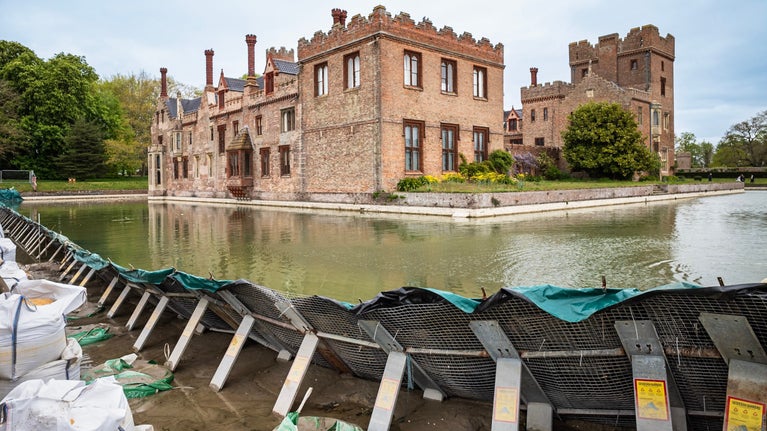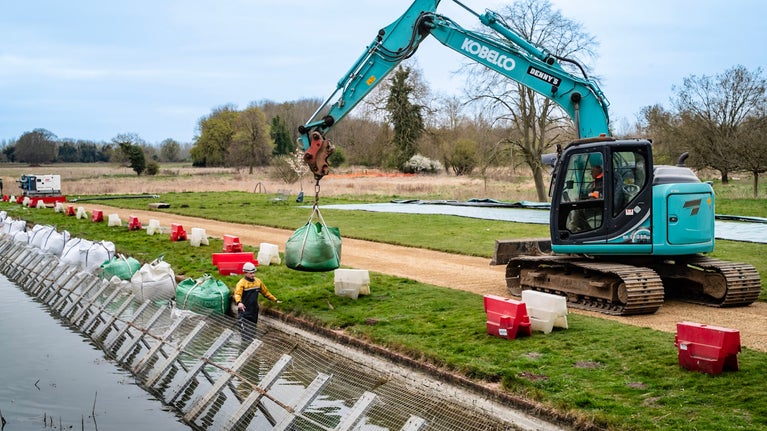Oxburgh's moat receives vital facelift

A vital conservation project is underway to help preserve the historic moat and the fabric of Oxburgh Hall.
In 2024, the team first noticed that the water level in the moat was unusually low. A sinkhole then appeared on the west lawn beside the sluice, which highlighted issues with the brickwork of the moat wall, as well as the sluice and culvert.
The first phase of work is now underway to re-point and replace bricks on the west side of the historic moat wall, as well as carry out repair work to the sluice and culvert. Not only will this help to reduce water loss, but the water in the moat plays an integral role in supporting the foundations of this 15th century landmark.
To make it possible for a team of contractors to carry out the work on the west side of the moat, a temporary cofferdam structure was installed, made from plastic membrane secured to frames, to hold back the water and create a safe, dry working environment.

The moat is fed via a channel that runs from the River Gadder to the corner of the moat. From here, water flows underground to the moat through a pipe or culvert, with another culvert on the opposite side of the moat allowing water to exit. A sluice gate adjusts the amount of water draining out of the moat, with water returning to its source, the River Gadder.
Donna Baldwin, General Manager at Oxburgh Estate, said: “The moat and its resident swans are one of the much-loved features of Oxburgh, with the hall captured in the reflections on the water.
“The maintenance and care of the moat at Oxburgh is an ongoing project and the team carefully monitors and manages the water levels. If the water drops too low, the brickwork is exposed, which has an impact on the structural integrity of the hall itself. Too high, and the water will flood out into the surrounding gardens.
“It’s a delicate balancing act to get right. It’s therefore important we carry out this project, made possible thanks to National Trust members, visitors and supporters, to ensure we can continue to look after this historic building and the environment.”

Oxburgh Estate has been part of the Norfolk landscape near Swaffham for over 500 years and despite its fortified appearance, the hall was built as a family home. It was completed in 1482 for Sir Edmund Bedingfeld and the Bedingfeld family has lived here ever since, surviving Civil War, periods of near dereliction and, in the 20th century, the threat of demolition.
Throughout June, visitors to Oxburgh Estate can watch the conservation project in action.
